[Herald Interview] Mayor Oh's grand schemes to bring out Seoul's fun side
Adding fun elements crucial for Seoul city's next step forward, mayor says as he opens 'Winta Fest' Friday
By Son Ji-hyoung, Lee Jung-jooPublished : Dec. 13, 2023 - 17:00
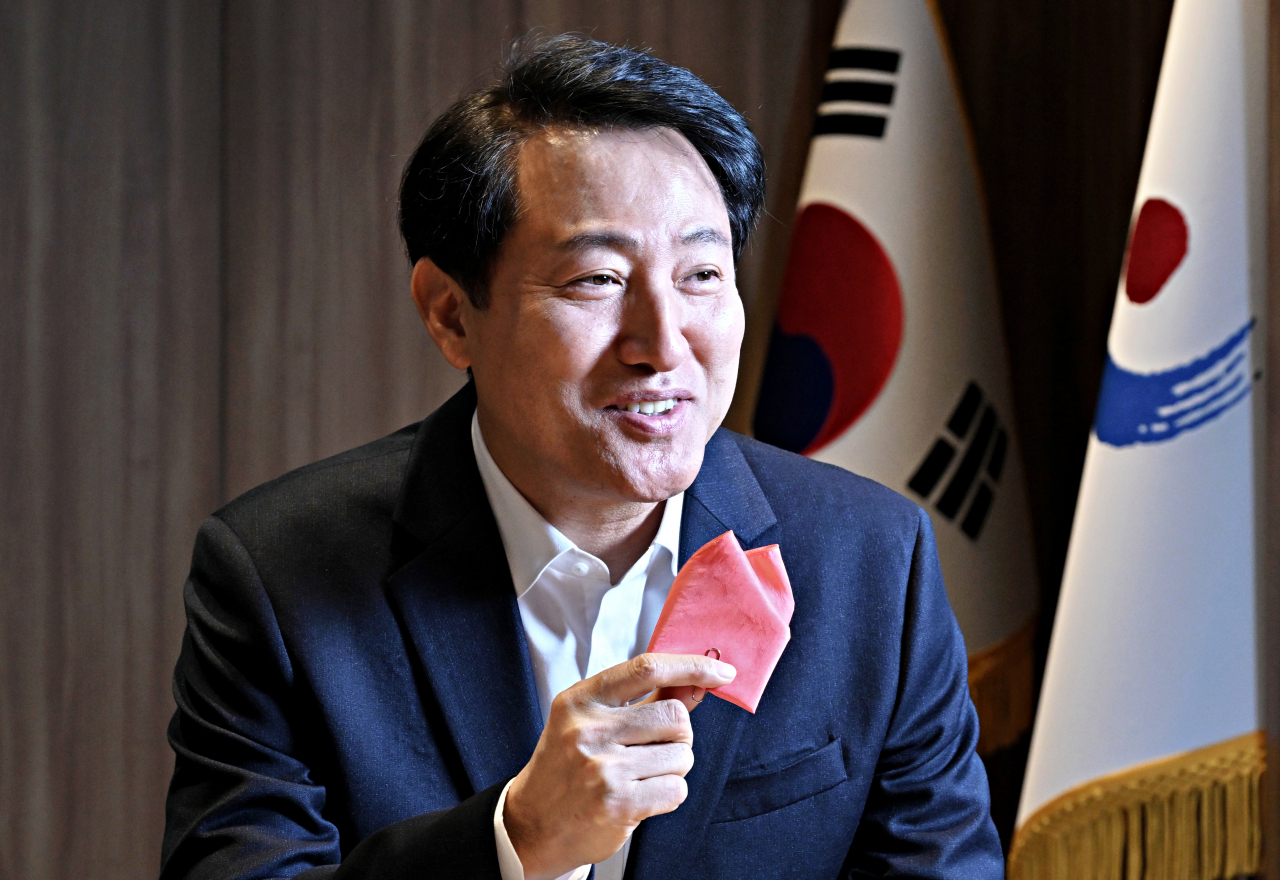
In a crowded but somewhat solemn atmosphere, some 60,000 people gathered at Seoul's New Year's Eve celebration near Bosingak on Dec. 31, 2022, braving the cold and waving their smartphone flashlights while watching prominent figures here ring a 3.2-meter-tall bell 33 times after a countdown.
For this year's New Year's celebration, the Seoul Metropolitan Government, as the host of the event, is looking to spice things up by adding festivities to boost touristic appeal.
Immersive outdoor lighting and media projections will dazzle visitors and tourists in seven locations in central Seoul through a one-month run starting Friday. New Year's Eve celebrations and countdowns will take place simultaneously in three locations: Bosingak plus along a section of Sejongdaero and in Dongdaemun Design Plaza. They will be accompanied by SeoulCon 2023, an exhibition event planned by the Seoul Business Agency to gather fashion, gaming and other media influencers from across the globe.
"What we're doing this year is a kind of an experiment," Seoul Mayor Oh Se-hoon said in a recent interview with The Korea Herald.
"The annual Bosingak bell-ringing ceremony has been held as a ritual in a somewhat serious atmosphere, and there were only a few performances before ringing the bell as a formality ... This year, we’re turning things around completely.”
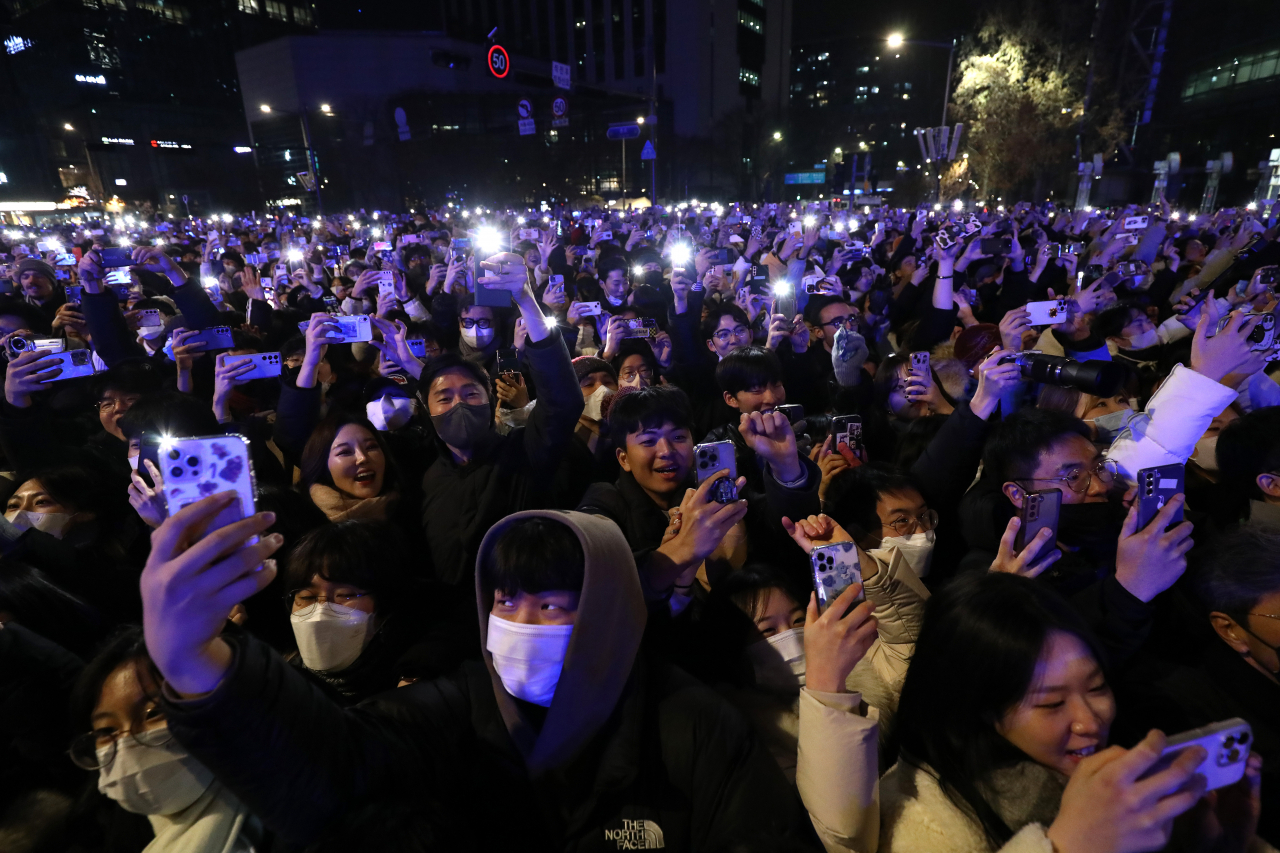
The decision by Mayor Oh -- who has served whole or parts of four terms in the position -- has been leveraged by a series of new urban design projects intervening in the Seoul cityscape that have opened in the past couple of years, offering Seoul fresh venues and ideas for nighttime winter festivities.
These include: the Woldae, a stage in front of Gwanghwamun for royal rituals during the Joseon era that had been buried under a paved road for about a century; Yeolrin Songhyeon, a green space neighboring Gyeongbokgung that opened last year after a century of restricted public access; and Sejongdaero, a redesign of a section of the area in front of Gwanghwamun to give visitors a larger pedestrian space, called Gwanghwamun Square -- all of which serve as locations for media projections.
Also, the decision to revamp New Year's Eve reflects Seoul's rethinking of its position as an emerging winter travel destination, targeting visitors from countries that do not have a cold winter season. In this regard, according to Oh, over 3,000 social network influencers from 50 countries were invited to promote activities in Seoul on social media for the year-end SeoulCon 2023 event.
"The middle of winter is far from being peak travel season in Seoul, but the unique cold of Seoul could still be a splendid winter weather getaway," said the 62-year-old.
"As I mentioned earlier, in Southeast Asia, the cold itself can be a novel experience. People will be able to enjoy counting down to the new year together in the cold night air in Seoul, which they feel is hip," he continued.
On New Year's Eve, the countdown celebration will be preceded by a parade from Sejongdaero to Jongno 1-ga featuring a clown troupe, flag-bearers and a marching band.
Two more sites for the New Year's Eve celebrations will be added besides Bosingak. An artificial sun with a 12-meter diameter, which Seoul city calls “Midnight’s Sun,” will be constructed in the middle of Sejongdaero to symbolize the start of the new year. The countdown will also take place in Dongdaemun Design Plaza, which is to host SeoulCon 2023.
"Why should the West set the standard for New Year's Eve, when the sun rises earlier in Seoul than most of the other parts of the world?" Oh asked.
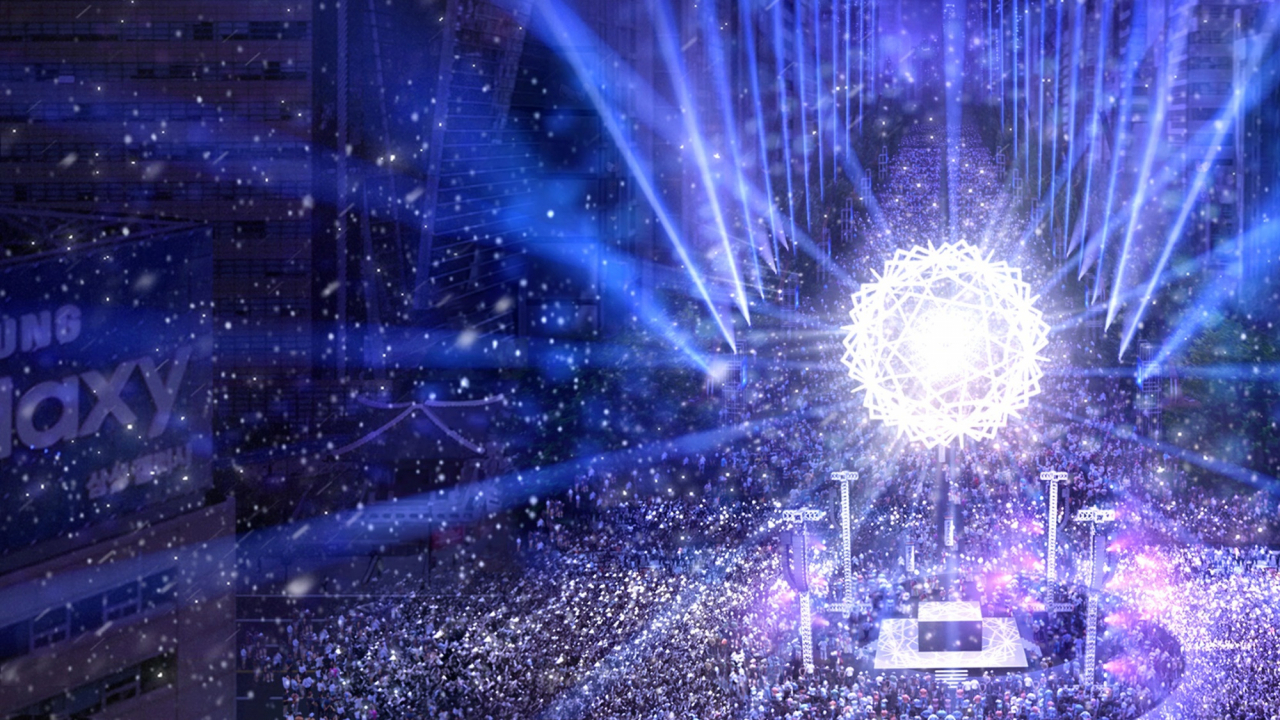
Plans for the new winter festivals -- dubbed "Winta" -- are part of Oh's bid to turn the South Korean capital city, once a symbol of rapid urbanization in the wake of the "miracle on the Han River" from the 1960s through the 1990s, into one brimming with "fun" elements, he said.
For example, Oh has set his sights on the potential of the Han River as a venue for entertainment. The city has been trying to pedestrianize Jamsugyo, a bridge connecting the two riverside parks on each bank of the Han River, which hosted the car-free Jamsu Bridge Walking Festival last year and Louis Vuitton's 2023 pre-fall fashion show. In 2023, the riverside parks also hosted events like a media art festival and a drone light show, among others.
Next year, Seoul aims to open a port for cruise ferry tours along the Han River, with a full-fledged opening for cruises to other Korean ports as well, such as Mokpo, South Jeolla Province, or Jeju planned for 2026, and to Chinese ports planned for 2028. A "river bus" service is also planned to begin operations in September 2024.
At Gwanghwamun Square, the Worlds Fan Fest for this year’s League of Legends World Championships took place in November, attracting around 50,000 international esports fans. Earlier in April, Gwanghwamun Square introduced cultural experience booths during Seoul Festa 2023, attracting some 180,000 to Seoul during its eight-day run.
"We want Seoul to be remembered as a fun city," Oh said. "I'm talking about a city where you can savor every moment of joy, and a city filled to the brim with entertainment."
Oh said such fun elements could help Seoul achieve its ambitious tourism goals by 2026: embracing 30 million foreign visitors yearly, encouraging them to stay for at least seven days and to spend at least 3 million won ($2,280) here, while having at least 70 percent of them revisit the city.
From January to September, foreign visitors to Seoul amounted to 6.3 million, up more than twofold from the annual figure of 2.63 million in 2022 but still lower than the 13.9 million who visited in 2019.
"When Seoul comes to mind, they'll think, 'It seems like it would be fun to live there, that it's an enjoyable place.' That's the kind of city we're trying to brand Seoul as," he said.
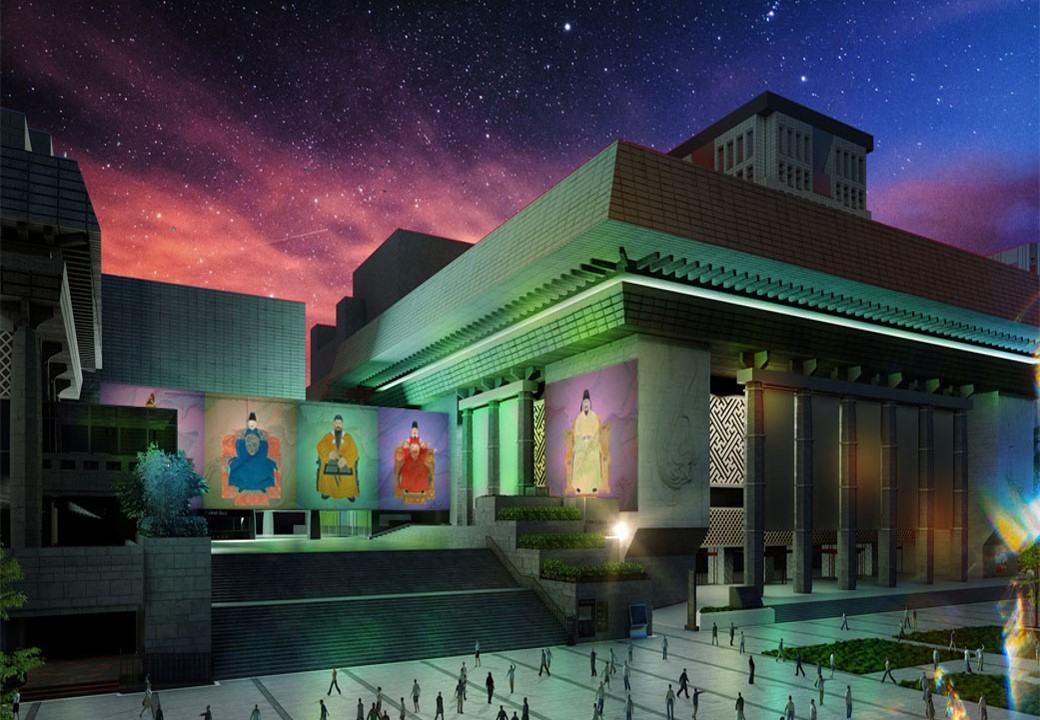
Oh's ideas and endeavors to bring innovative architectural design to the city apparently come from inspiration during trips to other countries. He visited Europe in March, Japan in June and North America in September.
Oh hopes to transform Seoul into an attractive city that tourists find pleasing.
“Seoul Twin Eye” is Oh's latest announced project, involving building two 180-meter-wide Ferris wheels intersecting each other at Haneul Park in western Seoul beginning in 2025.
Seoul is also working to turn Nodeulseom, an artificial island in the Han River, into what he calls a city "landmark" by improving pedestrian access to it and adding a space for media projections along a concrete wall and a floating stage, among others. The project will be followed by building a second Sejong Center for the Performing Arts in Yeouido.
Oh is planning these ambitious architecture and urban redesign projects in line with his proposal in February to ease regulations, for example for building heights, in order to incentivize developers to pursue more creative designs on new buildings.
"I'm asking Seoul officials in charge to create a new cityscape of Seoul where three to four out of 100 buildings have facial expressions," Oh said.
According to the Global Power City Index in 2022, published by the Mori Memorial Foundation, Seoul ranked No. 7 among 48 cities. Oh, whose fourth term ends in 2026, has expressed hopes for Seoul to climb to the No. 5 spot in the future.
"There was a time when the idea of urban branding inspired by Paris or by London was widely encouraged. Now, Seoul outshines those cities in some aspects, with some room for growth ahead," he said.
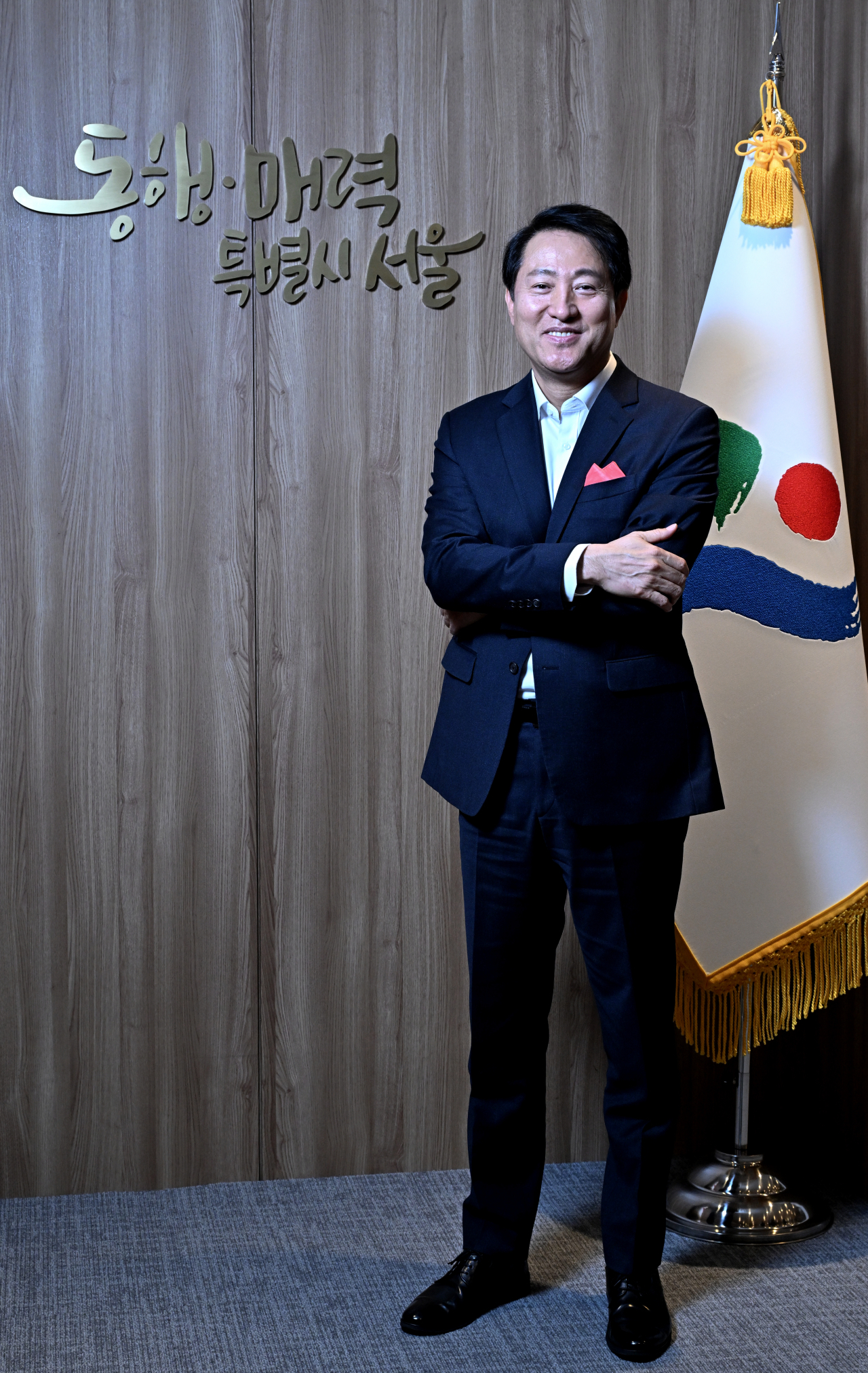
Profile of Oh Se-hoon
Oh Se-hoon is the 38th mayor of Seoul, elected on July 1, 2022. Having been elected twice as mayor in 2006 and 2010, Oh returned to the post at the mayoral by-election that took place on Apr. 7, 2021. This is his fourth term as Seoul's mayor
After graduating from Korea University’s School of Law, Oh made his name as an environment lawyer by winning a case concerning the “right to light” for the first time in South Korea’s history. Under this proposed right, developers and city planners were forced to leave adequate room between buildings. Oh also co-founded the Korea Federation for Environmental Movements, one of South Korea’s largest civic environmental organizations.
Oh also gained media attention and popularity after appearing on MBC’s "Lawyer Oh and Lawyer Bae" in 1994. He then further expanded his TV career as he became a host of a popular TV show on crime investigations "Unanswered Question" in 1996 which earned him nationwide popularity.
He then entered politics by winning a parliamentary seat in 2000 where he also served as the executive secretary of the Special Committee on Political Reform in the National Assembly.
Six years later, Oh won a local election to become the mayor of Seoul and was reelected in 2010 but resigned in the following year.
Oh redeemed his position as Seoul mayor to succeed later former mayor Park Won-soon in July 2020. He was elected mayor again on July 1, 2022 during the local elections, becoming the first person to be elected as the mayor of Seoul for the fourth time. He is a member of the ruling People Power Party.







![[Weekender] How DDP emerged as an icon of Seoul](http://res.heraldm.com/phpwas/restmb_idxmake.php?idx=644&simg=/content/image/2024/04/25/20240425050915_0.jpg&u=)




![[KH Explains] No more 'Michael' at Kakao Games](http://res.heraldm.com/phpwas/restmb_idxmake.php?idx=644&simg=/content/image/2024/04/28/20240428050183_0.jpg&u=20240428180321)


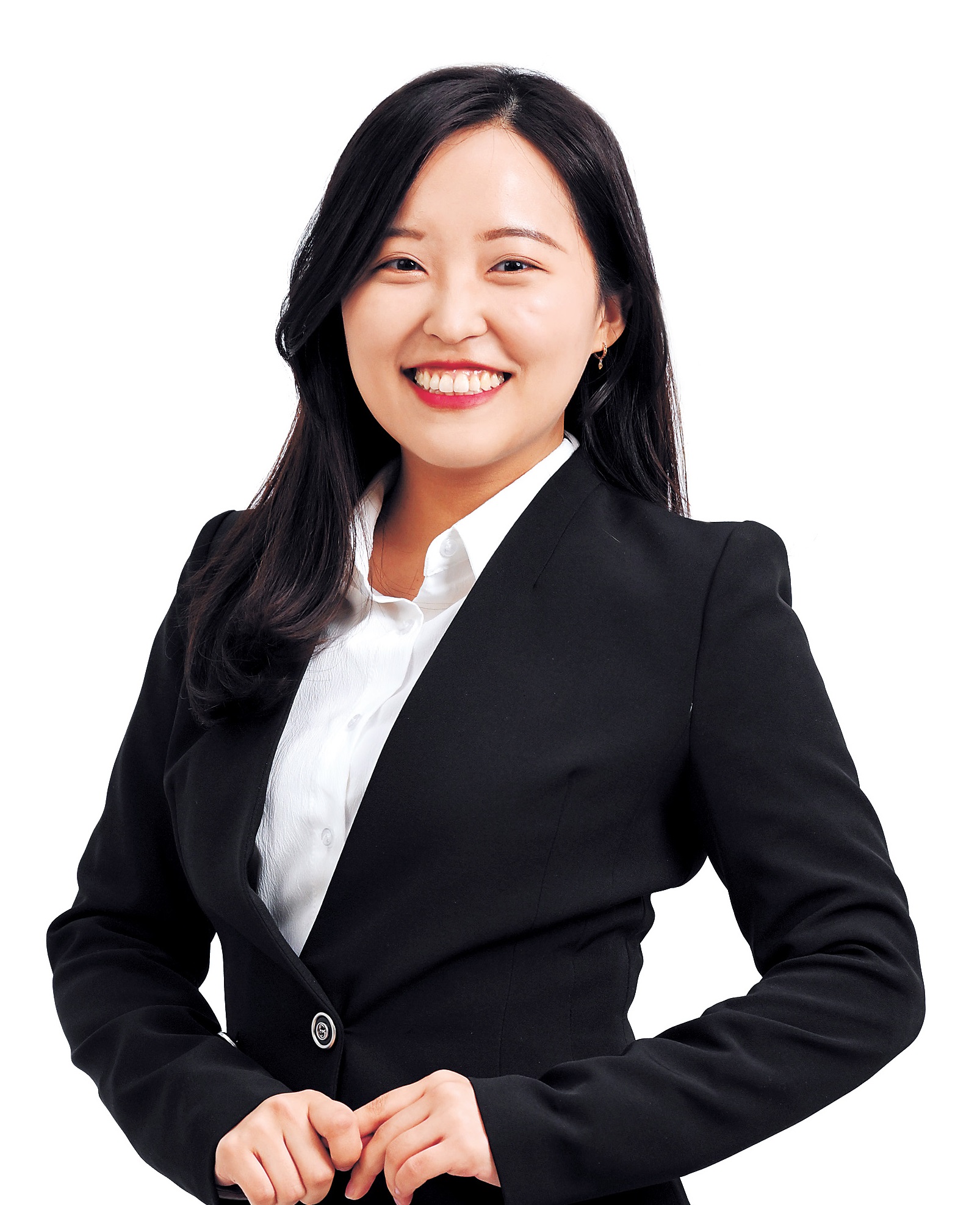




![[Herald Interview] Mistakes turn into blessings in street performance, director says](http://res.heraldm.com/phpwas/restmb_idxmake.php?idx=652&simg=/content/image/2024/04/28/20240428050150_0.jpg&u=20240428174656)
